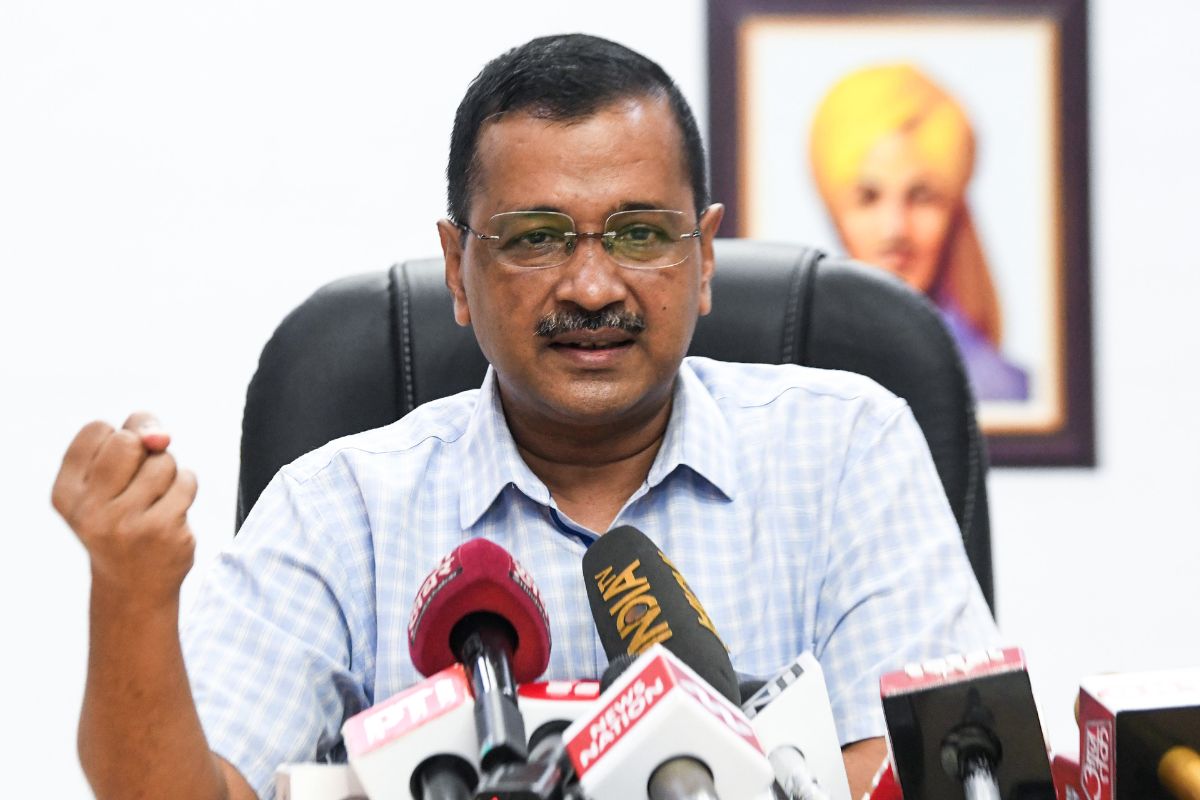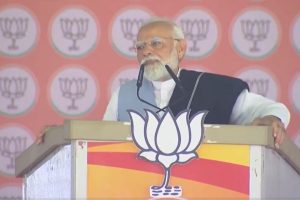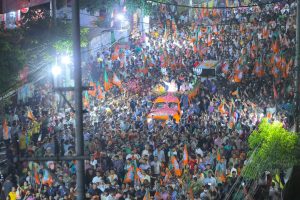Delhi Chief Minister Arvind Kejriwal on Monday denied that there was a flood-like situation in the National Capital as the water level in the Yamuna is below the danger mark and assured that the city government is prepared to deal with any eventuality.
He said evacuation of people from low-lying areas around Yamuna will commence once the river breaches the 206-metre mark.
The Yamuna crossed the warning level in Delhi. At 2 pm, water level in the river was recorded at 204.88 metre at Old Railway Bridge. The danger level of the river is 205.33 metres. At 2 pm, 2,13,679 cusecs of water had been released from Hathnikund Barrage.
Kejriwal had called an emergency meeting to discuss the issues related to the incessant rain in Delhi, as well as the rising water level of the Yamuna. Addressing a press conference after the meeting, he said the water level in the river is well below the danger mark, despite the release of three lakh cusecs (cubic feet per second) of water from the Hathnikund Barrage.
He said there was no flood threat for Delhi in the wake of rise in water level of Yamuna following two days of heavy rain in Delhi and adjoining areas.
Kejriwal said his government was in constant touch with the Central Water Commision (CWC), and according to their assessment, the current water level in the river is 203.58 meters, which will rise to 205.5 meters by tomorrow morning.
According to weather forecast, the water level in the Yamuna will not increase further.
“Experts say that there will not be any flood-like situations. However, we are prepared if it does happen. If the water level rises to 206 meter, we will initiate evacuation. We have identified 41,000 people living in the nearby areas of the Yamuna riverbank, and we have established relief camps for them,” the chief minister said.
He called for cooperation from the governments neighbouring states and leaders of other all parties during this challenging time.
“This is not the time to point fingers at each other. I believe that all state governments in Northern India are working to help their people. All parties and governments should work together to provide relief to the people. I would like to express my gratitude to MLAs, councillors, and ministers from all parties who were on the ground in Delhi during this rainy season, providing relief to the people,” he said.
Kejriwal said this time the problem was significant, and all efforts seemed insufficient. During the 24 hours of July 8 and 9, the capital witnessed 153 mm of rain, breaking a 41-year record.
The drainage system in Delhi was not equipped to handle such heavy rainfall.
“In the past three to four years, the city experienced a maximum of 100 mm of rain, and waterlogging areas were cleared within one-and-a half hours. But 153 mm of rain is unprecedented and has caused significant problems for the citizens. People are wondering if Delhi is about to face a flood. There are two factors: the amount of rain in Delhi and the water released from the Hathnikund Barrage by Haryana, which can lead to a flood-like situation. Water from Himachal Pradesh comes into the HathniKund Barrage,” Kejriwal said.
In 1978, Delhi witnessed a flood when 7 lakh cusecs of water was released from the HathniKund Barrage, causing the Yamuna river level to cross 207.49 meters at the old bridge. In 2013, 8 lakh cusecs of water was released from the Hathnikund Barrage, and the Yamuna level reached 207.32 mm, but it did not result in a flood. In 2019, 8.28 lakh cusecs of water was released from the HathniKund Barrage, and the river level reached 206.6 mm, again without causing a flood.
On July 9, 45,000 cusecs of water was released from the Hathnikund Barrage into the Yamuna. Later that night, an additional three lakh cusecs of water was released, and since this morning, around 2.5 lakh cusecs more has been released.
Kejriwal said that 680 pumps from the Public Works Department (PWD) were functioning to remove water from affected areas.
Additionally, 326 temporary pumps have been set up to address waterlogging. Apart from these, the Delhi government is utilising 100 mobile pumps to reach different areas.
Kejriwal said, “There is a possibility that the rain may have caused potholes in certain areas. We cannot repair them at the moment because they would break again. However, we can fill them with stones to prevent accidents. We have instructed the Municipal Corporation of Delhi (MCD) and the PWD to fill all potholes with stones. At all construction sites, we have ordered the opening of all drains and sewers.”
He said the highly-important New Delhi Municipal Council (NDMC) area was also severely affected by the rains. Therefore, he has directed the NDMC to study the situation and create a special plan to prevent such occurrences in the future.
Kejriwal ordered an inquiry into three incidents of road cave-in that occurred during the rain.
On Sunday, the Delhi government issued its first flood alert.
“The first warning is being issued as a discharge of 105,453 cusecs has been released into the Yamuna river from the Hathnikund Barrage on July 9, which is more than 1 lakh cusec,” the Central Flood Control Room, Irrigation & Flood Control Department said in its announcement.
“The water level at ORB on July 9 is 203.45 meters. The warning level is 204.50 meters, the danger level is 205.33 meters, and the highest flood level observed on November 6, 1978, was 207.49 meters.
“All the Sector Officers are hereby advised to keep a vigil in their respective areas and to take necessary action at vulnerable points such as deploying the requisite number of QRT teams in the field for Munadi/awareness activities to warn the people residing within river embankments,” it added.











